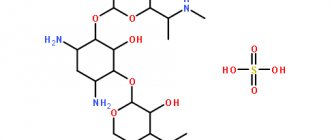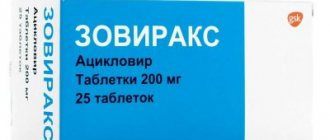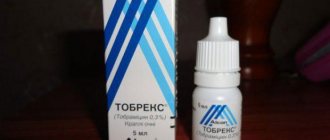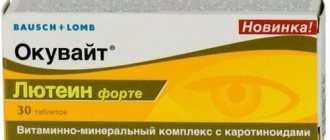Release form and composition of the drug
Levomycetin ointment is sold in tubes of different volumes: from 5 to 40 mg. Liniment is usually white in color, but a yellowish or greenish tint is also considered normal. The structure of the ointment should be uniform, without particles and impurities. Levomycetin has a specific medicinal odor that distinguishes it from its analogues.
The main component of the ointment is the antibacterial substance of the same name, designed to combat a wide range of infectious pathogens. Levomycetin has another official name - chloramphenicol. This is an old-generation antibiotic, which has been used for more than 70 years not only in medicine, but also in veterinary medicine and animal husbandry.
Levomycetin in its pure form is colorless and very bitter-tasting crystals. The substance is poorly soluble in water, so ethanol, pyridine, ethylene glycol or propylene glycol are used for dilution. It is the last of these alcohols that is found in the composition of chloramphenicol ointment.
The liniment also contains:
- methyluracil – a substance that accelerates regeneration processes;
- polyethylene oxide;
- petrolatum;
- cetostearyl alcohol.
Levomycetin ointment for eyes is available in 1% concentration. Formulations with a higher content of antibacterial component are not used for the treatment of ophthalmic diseases due to the high toxicity of chloramphenicol.
Pharmacological properties
Levomycetin is not used in high dosages, since the substance often provokes severe adverse reactions in the body. Chloramphenicol penetrates the pathogenic cell, thereby interfering with bacterial protein synthesis. Subsequently, the pathogenic microorganism loses its ability to reproduce and dies.
Levomycetin is effective against bacterial infections caused by:
- spirochetes;
- chlamydia;
- rickettsia.
Doctors often resort to the use of this drug in the presence of an infection that is resistant to penicillin and tetracycline antibiotics, streptomycins, and sulmamides.
Chloramphenicol is not prescribed for diseases caused by protozoan microorganisms (Giardia, Proteus, Pseudomonas aeruginosa). Also, chloramphenicol ointment is ineffective against acid-fast pathogens.
Pharmacodynamics and pharmacokinetics
The active component of the eye ointment penetrates deep into the mucous membranes through the cell membrane and immediately blocks the vital processes of harmful bacteria. Unlike most analogues, Levomycetin not only kills the infection, but also, thanks to methyluracil, promotes the regeneration of affected tissues and the synthesis of proteins in bacteria.
The absorption properties of this antibacterial drug are minimal, since it only partially penetrates the blood and lymph. A day after applying the ointment, the remnants of chloramphenicol completely leave the body in the urine.
Indications for use
Due to the high risk of side effects, chloramphenicol-based ointment is prescribed much less frequently today than 20-30 years ago. Levomycetin liniment is often used as part of complex therapy for the treatment of eye diseases.
Antibiotic ointment is recommended for:
- blepharitis;
- conjunctivitis;
- keratoconjunctivitis;
- trachoma;
- barley (hordeolum);
- keratitis.
The drug can be used for the simultaneous occurrence of two or more ophthalmological pathologies, as well as for secondary infection of the ocular mucosa, complicated by neuroparalytic keratitis. According to the instructions for use of chloramphenicol ointment, it can also be used as a dermatological agent.
A local antibiotic is suitable for the treatment of any skin diseases that occur with the formation of:
- ulcers;
- boils;
- abscesses;
- phlegmon.
As a prophylactic agent, chloramphenicol can be used in the presence of abrasions, scratches, open wounds with a risk of infection, and burns.
Indications
Levomycetin ointment is a popular medicine for topical use, which has a wide spectrum of antibacterial effects. The drug is used to treat various diseases and skin lesions that are infected with bacteria.
Indications for the use of ointment are the following diseases and pathologies of the skin:
- Minor and deep skin wounds complicated by bacterial infection,
- Burns of the epidermis caused by exposure to high temperatures or chemicals,
- Lesions of the skin, which are accompanied by tissue necrosis and the release of purulent exudate,
- Furunculosis and carbuncles,
- Bedsores,
- Difficult-to-heal wounds and trophic ulcers,
- Dermatoses and inflammation of the nail plate,
- Microbial eczema caused by bacteria
- Acne, pimples and acne,
- Hard-to-heal cracked nipples.
This drug is also prescribed for a number of other diseases of the epidermis, sweat glands and hair follicles, which can be treated with antibacterial drugs.
In addition, Levomycetin ointment is very widely used in ophthalmic practice for the treatment of various inflammatory eye diseases that are complicated by an infectious process.
In ophthalmology, chloramphenicol ointment is prescribed for the treatment of:
- Keratitis,
- Blepharitis,
- Conjunctivitis,
- Trachomas.
Important! If inflammatory processes or injuries to the skin occur, you should first consult a doctor. Do not self-medicate and use the ointment only after a doctor's prescription.
Contraindications
Due to its toxicity, this antibacterial agent has strict contraindications for use:
- individual intolerance to chloramphenicol or other substances in the ointment;
- psoriasis;
- eczema;
- mycotic lesions of the skin and mucous membranes;
- liver dysfunction;
- renal failure;
- porphyria;
- oncological disease.
The manufacturer does not set restrictions on the use of liniment for pregnant and lactating women, children and elderly patients. At the same time, the decision on the need to use chloramphenicol ointment in a given case should be made exclusively by the attending physician, who objectively assesses the potential risks and benefits for the patient.
Instructions for use, dosage for children and adults
The doctor should familiarize the patient in detail with the treatment regimen for eye diseases with chloramphenicol-based liniment. To obtain more detailed information about this drug and the nuances of its use, you should independently study the instructions.
Levomycetin (Levomekol) eye ointment
In the treatment of ophthalmological diseases, 2 methods of using chloramphenicol ointment are used:
- laying behind the eyelid;
- applying bandages.
The first method is considered more effective, but it is not suitable for children. To obtain a lasting therapeutic effect and prevent recurrence of the eye infection, it is important to use the ointment for the full course, and not stop treatment after the first improvements.
The need for long-term use of Levomycetin (at least 10-14 days), according to experts and patients, is one of the main disadvantages of this drug and old-generation antibiotics in general. Modern analogues act faster and are also less toxic.
If a specialist prescribes eye drops along with the ointment, then an interval of 15-20 minutes must be maintained between the use of topical medications. In this case, the eyes are first instilled with liquid solutions, and only then formulations of a thicker consistency are applied.
Levomycetin ointment must be applied at least 2 times a day. For mild cases of illness, a single use may be sufficient, but for severe cases, it is recommended to perform up to 4-5 procedures per day. For the treatment of adult patients, liniment is placed under the lower eyelid.
It is important to adhere to the following algorithm:
- Wash your hands thoroughly.
- Warm the tube with ointment in your hands until its temperature approaches body temperature.
- The lower eyelid should be slightly pulled down and a small amount of the drug should be placed under it as a strip. During the procedure, it is advisable for the patient to look up.
- In order for the antibacterial component to be distributed over the entire surface of the mucous membrane, you need to close your eyes and, without opening your eyelids, make circular movements with your eyeballs for several seconds.
- After applying the ointment, it is important not to open your eyes for 3-5 minutes.
If there is intense discharge of purulent contents, before the medical procedure it is necessary to rinse the eyes with a pale pink manganese solution. This remedy is considered the simplest effective antiseptic.
Patients who use contact lenses must clear their eyes of foreign bodies before using the ointment. It will be possible to install the products back after 30-45 minutes. after an antibacterial procedure.
To treat eye diseases, the ointment is applied in a thin layer. If Levomycetin is used for dermatological problems, liniment is used in large quantities. The ointment should dry a little, after which a gauze bandage is applied to it and left for 30-40 minutes. for therapeutic effects.
For barley
Levomycetin with a minimal concentration of antibiotic is also used to treat barley, the scientific name of which is “hordeolum”. The affected area on the lower eyelid is lubricated with 1% ointment. If we are talking about internal barley, liniment is placed behind the lower eyelid. For children to treat hordeolum, it is better to apply external dressings with Levomycetin. Keratitis or trachoma is treated in a similar way.
To achieve the expected result with an eye patch, you must:
- Use only a sterile bandage (gauze), folded in 4-8 layers.
- To treat one eye, an extruded strip of liniment 1-2 cm long is sufficient.
- The bandage must be applied to the eye and fixed for 15-20 minutes.
For conjunctivitis
In case of inflammation of the eyelid or conjunctiva, placing ointment behind the eyelid will help improve the condition of the eye. In acute cases of the disease, it is recommended to repeat the manipulation every 4-5 hours. Before each procedure, both eyes must be treated with a disinfecting solution.
Side effects
Negative consequences from the use of Levomycetin are rare. External use of the ointment in isolated cases leads to the development of adverse reactions. The risks of complications can be minimized by simply following the instructions.
Levomycetin ointment, used to treat the eyes over a long period, can cause bone marrow hypoplasia (aplastic anemia) - one of the most severe side effects. With this disease, the hematopoietic function of the bone marrow is inhibited, resulting in a deficiency of white and red blood cells.
The chances of this disorder occurring are negligible, but clinically confirmed cases of the development of an atypical process have occurred. Those at risk of developing bone marrow failure syndrome are those with a history of blood diseases. To prevent this complication, the patient must constantly undergo blood tests and monitor its indicators.
A more common side effect from the use of Levomycetin is an allergy.
Most often, chloramphenicol intolerance manifests itself:
- redness of the eyelid, mucous membrane of the eye;
- itching;
- burning;
- increased lacrimation;
- dermatitis;
- small rash around the eyes;
- development of a fungal infection.
In severe cases of individual intolerance, Quincke's edema is possible, therefore, before using Levomycetin ointment, it is necessary to test the drug and make sure there is no pathological reaction. If the allergy test gives a positive result, liniment cannot be used.
What kind of ointment
Levomycetin ointment is an antibacterial drug for external use, a homogeneous white mass with a pungent odor.
The medicine is used to eliminate ophthalmological and dermatological diseases of microbial origin.
The medicine is produced in aluminum tubes of 25, 40 g, with a concentration of the active substance of 1 and 5%.
Active ingredient and composition
The main active ingredient is the antibiotic chloramphenicol or chloramphenicol.
Liniment Levomycetin – composition:
- methyluracil;
- polyethylene oxide;
- propylene glycol is a weak antiseptic;
- cetyl alcohol;
- Vaseline oil – softens and moisturizes the skin.
Additional ingredients in the composition of Levomycetin paste contribute to the penetration of the antibiotic into the site of inflammation and its uniform distribution.
Pharmacological properties
- Levomycetin ointment destroys pathogens of microbial infections and accelerates the regeneration process.
- The drug is effective against spirochetes, rickettsia, chlamydia, bacteria resistant to penicillin, sulfonamides and streptomycin.
- It has no effect on Giardia, amoeba and other protozoan microorganisms, Pseudomonas aeruginosa, and acid-fast bacteria.
Pharmacodynamics and pharmacokinetics
The active substance of the drug penetrates cell membranes and interferes with the synthesis of proteins in bacteria. This prevents the proliferation of microbes and leads to their death.
The drug is excreted by the kidneys and liver.
Indications for use
Levomycetin ointment - what is it used for? It is indicated for infectious diseases of the epidermis and mucous membranes, the pathogens of which are sensitive to chloramphenicol:
It does not help with acne, since the pathological process is caused by propionbacteria, which are not sensitive to chloramphenicol.
Contraindications
Cannot be used for:
- renal, liver pathologies;
- exacerbation of porphyria;
- disturbances in the functioning of the hematopoietic system, blood diseases;
- oncological skin diseases;
- skin mycoses, eczema, psoriasis;
- intolerance, hypersensitivity to drugs.
Directions for use and dosage
Levomycetin ointment - instructions for use
| Disease | How to use |
| Blepharitis, conjunctivitis | Pull back the eyelid, apply no more than 1 cm of 1% ointment. Close your eye and make several circular movements to evenly distribute the drug throughout the mucous membrane. Do not open your eyes for 5-10 minutes. The procedure is carried out every 3-4 hours. |
| Trachoma, keratitis | The inflamed eyelid is lubricated or bandages are applied. Fold sterile gauze or bandage in several layers. Apply 1-2 cm of ointment, apply to the eye, secure. Keep for 30 minutes. |
| Barley | Lubricate the inflamed area 3-5 times a day with 1% liniment, or apply a bandage for half an hour. |
| Dermatological diseases | Apply the medicine in a thin layer to the inflamed area, cover with a sterile gauze bandage. For deep injuries, soak gauze with Levomycetin and fill the wound. Change the dressings every 12-24 hours, continue therapy until the pus is completely cleared or the manifestations of the inflammatory process are eliminated. |
Before using liniment for the treatment of ophthalmological pathologies, the eyes should first be washed with a weak solution of potassium permanganate.
In childhood, during pregnancy and pregnancy
The medicine is not prescribed to infants under 1 month; in the treatment of children under 3 years of age, drugs are used with caution. The amount of ointment is reduced depending on the age of the child; the exact dosage is determined by the doctor.
The effect of antibiotics on the fetus has not been fully studied; it is better to refrain from using drugs during pregnancy.
When treating cracked nipples during lactation, breastfeeding should be stopped for a while.
Side effects
If the instructions are followed, topical chloramphenicol rarely causes negative reactions.
Common side effects are dermatitis, allergic rashes, rarely - skin fungal infections, anemia, Quincke's edema, thrombocytopenia.
In the treatment of eye diseases, cases of bone marrow hypoplasia have been reported. Therefore, during therapy it is necessary to constantly monitor blood counts.
special instructions
- The medicine, even when applied externally in small doses, penetrates the systemic bloodstream.
- During treatment, you should completely stop drinking alcohol.
- Otherwise, a disulfiram reaction may occur - rapid heartbeat, cough, attacks of nausea and vomiting, and convulsions.
Overdose
If recommended dosages are significantly exceeded, vision deteriorates and blindness may develop.
Drug interactions
Liniment should not be combined with certain drugs:
- cytostatics;
- sulfonamides;
- drugs that inhibit hematopoietic functions.
When using drugs during radiation therapy, the risk of developing severe adverse reactions increases. Chloramphenicol reduces the effectiveness of penicillins and cephalosporins. When used simultaneously with Erythromycin ointment, the therapeutic effect of both drugs is reduced.
If necessary, the doctor can replace Levomycetin with drugs with a similar therapeutic effect.
Analogs
Levomycetin - analogues
- Colbiocin;
- Levosin;
- Sintomycin;
- Levomekol.
Overdose
Due to the external use of the ointment and low absorption into the bloodstream, it is difficult to find detailed information about cases of Levomycetin overdose. Meanwhile, the manufacturers of this pharmaceutical product, in the annotation for the drug, warn that with long-term use in excessive doses, chloramphenicol can reduce visual acuity.
An overdose of chloramphenicol ointment may result in the side effects described above. To get rid of the symptoms, it is necessary to remove the remaining ointment from the mucous membrane, thoroughly rinsing the eyes with running water, and take antiallergic medications.
Overdose and side effects
Be sure to carefully read the instructions for the drug. Patients usually tolerate the drug well, but in rare cases, hypersensitivity reactions to Chloramphenicol or individual components of the drug are possible. If there are acne on the skin, the required concentration of the active substance is determined only by the attending physician. As a result, excessive swelling of the skin and itching can be avoided.
When side effects are not only pronounced, but also worsen, the use of the drug must be immediately discontinued and urgently consult a doctor.
Remember that the medicine should not be applied to skin where there is pus discharge, since when it gets into an open purulent wound, swelling and damage to already quite irritated tissue occurs.
Side effects may appear both at the initial stage of using the drug and during the final stage of treatment.
These include the following symptoms:
- formation of a rash on the skin;
- reduced concentration of hemoglobin per unit volume of blood (anemia);
- Quincke's edema (a dangerous allergic reaction, expressed by the unexpected appearance of extensive swelling of the skin, subcutaneous tissue, fascia, muscles);
- thrombocytopenia;
- erythrocyte penia.
special instructions
Levomycetin ointment for eyes is safe for the fetus. There have been no experimental studies in which the mechanism of action of chloramphenicol during pregnancy and lactation was studied in detail.
However, the instructions for the drug note that its active component penetrates into the baby’s bloodstream through breast milk only in minute quantities. Thus, the decision to prescribe an antibiotic to a pregnant or lactating woman is made if the potential benefits outweigh the possible risks.
The drug can be used to treat cracked nipples during lactation. The duration of the course depends on the rate of regeneration processes and is usually 4-20 days. After each procedure, the breasts must be thoroughly washed with soap and rinsed with running water.
Levomycetin ointment should not be used to treat nasal diseases. Liniment is completely useless against rhinitis, the cause of which in 90% of cases is a viral rather than bacterial infection.
https://www.youtube.com/watch?v=ZVCOjs7XH50
LEVOMYCETIN
Pills
white or white with a faint yellowish tint, flat-cylindrical in shape, with a chamfer and a notch.
| 1 tab. | |
| chloramphenicol | 500 mg |
Excipients: potato starch - 40 mg, povidone K17 - 5 mg, stearic acid - 5 mg.
10 pieces. — cellless contour packages — cardboard packs. 10 pcs. — cellless contour packages — cardboard packs (for hospitals). 10 pcs. — cellless contour packages (2) — cardboard packs. 10 pcs. — cellular contour packages — cardboard packs.
10 pieces. — contour cell packaging (2) — cardboard packs. 10 pcs. — contour cell packaging (3) — cardboard packs. 10 pcs. — contour cell packaging (5) — cardboard packs.
10 pieces. — contour cell packaging (10) — cardboard packs (for hospitals).
pharmachologic effect
Broad-spectrum antibiotic. The mechanism of antimicrobial action is associated with disruption of protein synthesis in the microbial cell at the stage of transfer of t-RNA amino acids to ribosomes. Has a bacteriostatic effect. Active against gram-positive bacteria: Staphylococcus spp.
, Streptococcus spp.; gram-negative bacteria: Neisseria gonorrhoeae, Neisseria meningitidis, Escherichia coli, Haemophilus influenzae, Salmonella spp., Shigella spp., Klebsiella spp., Serratia spp., Yersinia spp., Proteus spp., Rickettsia spp.
; also active against Spirochaetaceae and some large viruses.
Chloramphenicol is active against strains resistant to penicillin, streptomycin, and sulfonamides.
Resistance of microorganisms to chloramphenicol develops relatively slowly.
Pharmacokinetics
After oral administration, it is quickly and almost completely absorbed from the gastrointestinal tract. Absorption - 90%. Bioavailability is 80% after oral administration and 70% after intramuscular administration. Plasma protein binding is 50-60%, in premature newborns - 32%. The time to reach Cmax after oral administration is 1-3 hours, after intravenous administration - 1-1.5 hours. Vd - 0.6-1 l/kg.
Therapeutic concentration in the blood remains for 4-5 hours after administration. Penetrates well into body fluids and tissues. Its greatest concentrations are created in the liver and kidneys. Up to 30% of the administered dose is found in bile.
Cmax in the cerebrospinal fluid (CSF) is determined 4-5 hours after a single oral dose and can reach 21-50% of Cmax in plasma in the absence of inflammation of the meninges and 45-89% in the presence of inflammation of the meninges. Penetrates through the placental barrier, concentrations in fetal blood serum can be 30-80% of those in maternal blood.
Excreted in breast milk. The main amount (90%) is metabolized in the liver. In the intestine, under the influence of intestinal bacteria, it is hydrolyzed to form inactive metabolites.
Excreted within 24 hours by the kidneys - 90% (by glomerular filtration - 5-10% unchanged, by tubular secretion in the form of inactive metabolites - 80%), through the intestines - 1-3%. T1/2 in adults is 1.5-3.5 hours, in case of impaired renal function - 3-11 hours. T1/2 in children from 3 years to 16 years - 3-6.5 hours. Weakly excreted during hemodialysis.
Indications
For oral administration: infections of the urinary and biliary tract caused by sensitive microorganisms.
For parenteral use: infectious and inflammatory diseases caused by sensitive microorganisms, incl.
brain abscess, typhoid fever, paratyphoid fever, salmonellosis (mainly generalized forms), dysentery, brucellosis, tularemia, Q fever, meningococcal infection, rickettsiosis (incl.
typhus, trachoma, Rocky Mountain spotted fever), inguinal lymphogranuloma, yersiniosis, ehrlichiosis, urinary tract infections, purulent wound infection, purulent peritonitis, biliary tract infections.
Contraindications
Hypersensitivity to chloramphenicol, inhibition of bone marrow hematopoiesis, acute intermittent porphyria, glucose-6-phosphate dehydrogenase deficiency, liver and/or renal failure, pregnancy, lactation; for oral administration - children under 3 years of age and weighing less than 20 kg; for parenteral use - children up to 4 weeks of age.
Carefully
Early childhood, patients who have previously received treatment with cytotoxic drugs or radiation therapy.
Dosage
Individual. When taken orally, the dose for adults is 500 mg 3-4 times a day. Single doses for children under 3 years of age - 15 mg/kg, 3-8 years - 150-200 mg; over 8 years old - 200-400 mg; frequency of use - 3-4 times/day. The course of treatment is 7-10 days.
IV in a slow stream or IM for adults IV or IM at a dose of 0.5-1.0 g per injection 2-3 times a day. For severe forms of infections (including typhoid fever, peritonitis) in a hospital setting, it is possible to increase the dose to 3-4 g/day. The maximum daily dose is 4 g.
Children - under the control of the concentration of the drug in the blood serum depending on age: infants and older - 12.
5 mg/kg (base) every 6 hours or 25 mg/kg (base) every 12 hours, for severe infections (bacteremia, meningitis) - up to 75-100 mg/kg (base)/day.
From the hematopoietic system:
reticulocytopenia, leukopenia, granulocytopenia, thrombocytopenia, erythrocytopenia; rarely - aplastic anemia, agranulocytosis.
From the digestive system:
nausea, vomiting, diarrhea, flatulence, dysbacteriosis
From the nervous system:
psychomotor disorders, depression, confusion, peripheral neuritis, optic neuritis, visual and auditory hallucinations, decreased visual and hearing acuity, headache.
Allergic reactions:
skin rash, urticaria, angioedema.
Local reactions:
irritating effect (for external or local use).
Other:
secondary fungal infection; when used parenterally in children under 1 year of age - collapse.
, burning or irritation of the penis in a sexual partner, vaginal dysbiosis.+++++
Drug interactions
With the simultaneous use of chloramphenicol with oral hypoglycemic drugs, an increase in the hypoglycemic effect is observed due to the suppression of the metabolism of these drugs in the liver and an increase in their concentration in the blood plasma.
When used simultaneously with drugs that inhibit bone marrow hematopoiesis, there is an increased inhibitory effect on the bone marrow.
When used simultaneously with erythromycin, clindamycin, lincomycin, a mutual weakening of the effect is observed due to the fact that chloramphenicol can displace these drugs from the bound state or prevent their binding to the 50S subunit of bacterial ribosomes.
When used simultaneously with penicillins, chloramphenicol counteracts the bactericidal effect of penicillin.
Reduces the antibacterial effect of cephalosporins.
Chloramphenicol suppresses the cytochrome P450 enzyme system, therefore, when used simultaneously with phenobarbital, phenytoin, warfarin, a weakening of the metabolism of these drugs, a slower elimination and an increase in their concentration in the blood plasma are observed.
special instructions
Chloramphenicol is not used in newborns, because the development of “gray syndrome” is possible (flatulence, nausea, hypothermia, gray-blue skin color, progressive cyanosis, dyspnea, cardiovascular failure).
Use with caution in patients who have previously received treatment with cytotoxic drugs or radiation therapy.
With simultaneous intake of alcohol, a disulfiram-like reaction may develop (skin hyperemia, tachycardia, nausea, vomiting, reflex cough, convulsions).
During treatment, systematic monitoring of peripheral blood patterns is necessary.
Uncontrolled prescription of chloramphenicol and its use in mild forms of infectious processes, especially in pediatric practice, are unacceptable.
Pregnancy and lactation
Chloramphenicol is contraindicated for use during pregnancy and lactation (breastfeeding).
Use in childhood
Chloramphenicol is not used in newborns, because the development of “gray syndrome” is possible (flatulence, nausea, hypothermia, gray-blue skin color, progressive cyanosis, dyspnea, cardiovascular failure).
For impaired renal function
Use is contraindicated in severe renal impairment.
For liver dysfunction
Contraindicated in cases of severe liver dysfunction.
Use in old age
Use with caution in elderly patients to avoid exacerbation of chronic diseases.
The description of the drug LEVOMYCETIN is based on officially approved instructions for use and approved by the manufacturer.
The information provided on drug prices does not constitute an offer to sell or purchase goods. The information is intended solely for comparing prices in stationary pharmacies operating in accordance with Article 55 of the Federal Law “On the Circulation of Medicines”.
Found an error? Select it and press Ctrl+Enter.
Source: https://health.mail.ru/drug/levomitsetin_3/
Drug interactions
The annotation for Levomycetin also contains recommendations for combining this liniment with other drugs.
Antibacterial eye ointment should not be used in parallel with:
- cytostatics;
- sulfonamides;
- immunosuppressants;
- medications that inhibit hematopoiesis.
You cannot use eye ointment with chloramphenicol during a course of radiation therapy, since radioactive and toxic effects on the body will inevitably lead to dangerous reactions and progression of the malignant process.
Chloramphenicol inhibits the effectiveness of penicillin and cephalosporin antibiotics. You should not combine the use of chloramphenicol ointment with erythromycin ointment, otherwise the effect of antibiotics will be neutralized and the use will be completely useless for the patient.
The use of ointment with other antibacterial medications; ointment can be used in the absence of local reactions and positive dynamics of recovery.
Levomycetin ophthalmic ointment
For ophthalmic ailments, local medications are used. Levomycetin ointment has an antimicrobial effect due to the content of the antibiotic chloramphenicol. It destroys pathogenic microorganisms and promotes recovery from conjunctivitis, blepharoconjunctivitis, blepharitis, keratitis and other pathologies.
Properties and indications
Levomycetin ointment is a local drug intended to destroy viruses and bacteria. The active element is the antibiotic chloramphenicol (also called chloramphenicol).
Release forms: ointment, tablets, drops, solution with alcohol, powder for injection. Levomycetin ointment is produced in aluminum tubes of 5, 25 and 40 g, with a content of 1, 2.5 and 5%. The paste is white, sometimes with a yellow or green tint.
The packaging contains instructions for use.
Auxiliary elements:
- propylene glycol;
- methyluracil;
- polyethylene oxide, etc.
The main purpose of the drug is to provide an antibacterial effect. Levomycetin, when penetrating cell membranes, blocks the protein synthesis of microorganisms, as a result of which these bacteria die and cannot reproduce. Thanks to the active component, microbes are destroyed and tissues heal faster. Chloramphenicol is able to cope with the following bacteria:
The drug may affect spirochetes.
- microorganisms resistant to penicillin, streptomycin, sulfonamides;
- spirochete;
- chlamydia;
- rickettsia.
At the same time, the drug does not have a negative effect on the following microorganisms:
- Giardia;
- amoeba;
- acid-resistant bacteria;
- clostridia;
- leishmania.
Purpose
Levomycetin ointment is necessary for the following pathologies of the visual organs:
- conjunctivitis;
- keratoconjunctivitis;
- blepharoconjunctivitis;
- blepharitis;
- keratitis;
- neuroparalytic keratitis;
- barley.
Restrictions
In case of cardiovascular pathologies, the patient needs to use the drug very carefully.
Eye ointment with chloramphenicol is not used for prophylaxis. It is prescribed with particular caution and under the supervision of the attending physician in the following cases:
- age up to 3 years;
- period of pregnancy and lactation;
- presence of cardiovascular diseases.
Contraindications:
- blood diseases;
- exacerbation of intermittent porphyria;
- insufficiency of hematopoietic function;
- psoriasis;
- renal and liver pathologies;
- hypersensitivity to chloramphenicol;
- lack of cytosolic enzymes;
- oncology;
- eczema;
- fungal skin diseases;
- age up to 4 weeks.
When prescribing a medication in some cases, patients with kidney diseases must monitor their blood counts.
Adverse reactions
The human body may react to the drug with dermatitis.
When using chloramphenicol ointment, the following undesirable effects may occur:
- dermatitis;
- rash;
- bone marrow hypoplasia;
- allergic conjunctivitis;
- fungal skin infections.
To avoid the occurrence of bone marrow hypoplasia, regular monitoring of the condition of peripheral blood is necessary. If undesirable reactions occur, you should stop using the medication and consult a doctor. The doctor must select a suitable analogue. If allergic reactions occur, an antihistamine is used. One of the following medications helps:
Compatibility
By combining the drug with erythromycin, you may not achieve the desired effect from both ointments.
When using ointment with chloramphenicol, the following features must be taken into account:
- The medication should not be taken together with the following medications: drugs that depress the function of hematopoiesis;
- cytostatics, immunosuppressants;
- sulfonamides.
What can be replaced?
There are various analogues with a similar effect. These are “Kolbiotsin”, “Levomekol”, “Levosin”, “Sintomycin”, etc. In addition to chloramphenicol, they may contain other active elements.
"Kolbiotsin" additionally contains tetracycline, and "Sintomycin" contains sorbic acid, carboxymethylcellulose, and castor oil.
Before replacing chloramphenicol ointment with another drug, you should definitely consult with your doctor. The doctor will help you choose the appropriate analogue.
Source: https://EtoGlaza.ru/lekarstva/antibakterialnye/levomitsetinovaya-maz-dlya-glaz.html
Analogs
If for some reason it is impossible to use Levomycetin, the patient should receive a recommendation from the attending physician to replace the eye ointment with an analogue.
Among the substitutes for this drug, in addition to products with similar composition and medicinal properties, it is worth noting liniment in concentrations of 2.5% and 5%. In ophthalmology, this dosage is not used, so when purchasing an ointment at a pharmacy, you need to pay attention to the chloramphenicol content.
In case of a complicated course of the disease, chloramphenicol ointment for the eyes can be replaced with drops with the same active substance. The liquid solution penetrates faster into the deeper tissues of the visual organ, which speeds up the healing process.
Levomycetin drops have the same list of indications as liniment. At the acute stage of the disease, the medicine should be dripped every 2-3 hours, gradually reducing the frequency of use. Just like ointment, drops are ineffective for mycotic eye lesions.
Among analogues of Levomycetin there are pharmaceutical products of different price segments.
All of the following drugs have in common the presence of antibacterial components:
| Trade name | Active substance | general description | Price |
| Levomekol | chloramphenicol, dioxomethyltetrahydropyrimidine | Available in the form of an ointment, it is used for the eyes only through a bandage, and is prescribed for purulent diseases. | 130 rub. |
| Erythromycin ointment | erythromycin | Belongs to the group of local macrolides and can be used to prevent blenorrhea in newborns. | 40 rub. |
| Syntomycin ointment | chloramphenicol | Prescribed for infectious and inflammatory diseases of the skin and mucous membranes, it has the same contraindications as Levomycetin. | 75 rub. |
| Phloxal | ofloxacin | A new generation local antibiotic from the fluoroquinolone group is effective against the most common pathogens and rarely causes adverse reactions. | 135 rub. |
| Tetracycline | tetracycline | Not suitable for treatment during pregnancy and lactation, practically not absorbed into the blood, can be used for a short time | 70 rub. |
The best analogue of "Levomycetin": comparison and reviews:
"Levomycetin" is an effective antibiotic used to treat a wide variety of bacterial infections. This medicine is relatively inexpensive. You can almost always find it in pharmacies.
However, this drug has a number of contraindications, and its use is not always allowed. In some cases, doctors prescribe analogues instead of the drug "Levomycetin".
There are many drugs similar to this medicine on the market today.
Composition and release forms
Actually, “Levomycetin” itself can be supplied to pharmacies and medical institutions in different forms, in the form of:
- tablets and capsules;
- ointments;
- alcohol solution;
- extended-release tablets;
- eye drops.
Thus, for various types of bacterial diseases it is very convenient to use Levomycetin. Its analogues are usually available only in tablets and powders. The main active ingredient of this medicine is chloramphenicol. This antibiotic belongs to the amphenicol group.
In what cases can it be prescribed
The substance chloramphenicol is destructive to most varieties of harmful bacteria, both gram (+) and gram (-). This antibiotic kills even those pathogenic microflora that streptomycin, penicillin, and sulfonamide cannot combat. Chloramphenicol does not kill only protozoa, acid-fast bacteria, Clostridium and Pseudomonas aeruginosa.
Levomycetin tablets are prescribed for diseases such as:
- typhoid fever;
- biliary and urinary tract infections;
- brucellosis;
- cystitis;
- dysentery;
- brain abscess;
- purulent peritonitis;
- ehrlichiosis;
- rickettsiosis and others like that.
Solutions of "Levomycetin" are used to treat:
- trophic ulcers;
- bedsores;
- wounds;
- boils;
- infected burns;
- cracked nipples in nursing women, etc.
Conjunctivitis and purulent otitis media are what “Levomycetin” eye drops are most often used for. Its analogues in this form are practically not produced. But several such drugs are still on sale today.
How to use
Levomycetin tablets are taken 1-4 times a day, depending on the indications. The maximum dose of the drug in this form is 500 mg per day. It can be exceeded only in especially severe cases. For example, for typhoid fever, up to 4 g of this medicine per day is sometimes prescribed. The course of treatment using the drug "Levomycetin" can last no more than 10 days.
An alcohol solution of this medicine is used to lubricate affected areas of the skin or under bandages. The duration of treatment in this case depends on the nature of the disease.
Levomycetin eye drops are used 1 drop. into each conjunctivitis sac once a day. The course of treatment using this form of medication usually lasts 5-15 days.
Contraindications and side effects
This is the instructions for use for the drug “Levomycetin”. Its analogues are most often available in tablets and are usually used only orally. This medicine should not be used for diseases such as:
- acute intermittent porphyria;
- G6PD enzyme deficiency;
- liver or kidney failure;
- depression of bone marrow hematopoiesis.
Sometimes, after taking the drug "Levomycetin", patients may experience various kinds of side effects. Most often it is nausea and diarrhea. Also, the medicine can provoke the development of dysbiosis, aplastic anemia, depression, fungal infection and even mental disorder.
Terms, conditions of sale and storage
Levomycetin ointment is valid for 2 years from the date of manufacture of the drug. No special conditions are required for storing a tube of liniment. It is important to keep the packaging of the ointment away from children and sunlight. You can store the ointment at room temperature, but if it exceeds +25 °C, it is better to transfer the medicine to the refrigerator.
Before you start using chloramphenicol ointment, it is important to pay attention to its consistency, smell, and color. Darkening, lack of uniformity, and the presence of lumps indicate deterioration of the product. This drug should not be used.
Levomycetin is sold from pharmacies without an official prescription, but this should not be a reason for self-medication. Uncontrolled use of the drug can lead to complications.











